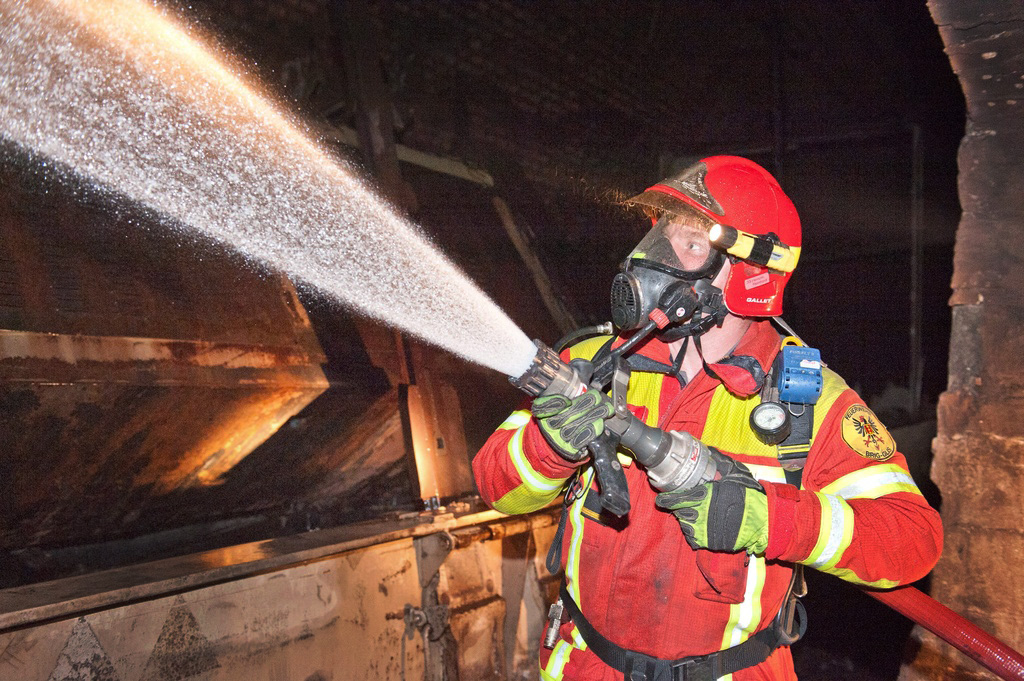Cableway inventory breaks new ground

A first inventory of cableways has just been published in which Federal Culture Office director Jean-Frédéric Jauslin praises Switzerland as a cable transport country.
Cables include aerial systems but also funiculars that also are operated by cables on the ground.
Jauslin points out that for technical reasons cog railways were not always suited to take tourists into the Alps.
“The first touristic funicular in the world, which was inaugurated in 1879, went up to the Giessbach Hotel above Lake Brienz,” he said.
Jauslin says people have long neglected this type of transport and it’s high time that that this was put right.
Oliver Martin, deputy head of the section of cultural heritage and historic monuments in the Federal Culture Office, agrees.
“With the rise of tourism in the late 19th century, tourists arrived more and more by train in Switzerland and then it was an aim to take them up to the mountains without effort,” he told swisssinfo.ch.
This was first tried with rack railway but because the railways were too steep for this type of train, funiculars were developed and later cableways.
“The development of tourism in Switzerland has been influenced a lot by the technological development of cableways in the mountains,” he said.
“Great assets”
“It [the inventory] definitely is one of our great assets,” commented Urs Eberhard, Executive Vice President Markets and Meetings at Switzerland Tourism.
“Switzerland basically is the cradle of adventure travel. The wilderness, the natural beauty of Switzerland has been made accessible by hundreds of cable cars. The saying ‘Switzerland is like a large amusement park with tons of rides – but for real’ certainly is also based on the many cable cars.”
And the usefulnesss of it all? “When we decided to declare 2010 the year of hiking, many of our ideas and proposed hiking trails made use of cable cars to facilitate the hike or to reach your destination where you started your hike.
“We make choices and offer our suggestions to make it easier for our visitors. For such suggestions we do use the cable car connections if possible. There are also some very special packages such as the “Bähnlisafari” in Central Switzerland which we promote.” (See link on right).
Means of transport
As the culture office’s Martin explains, cable cars are very important for mountain access.
“We should not forget that many are means to access remote agricultural areas, or an easy access for power stations in the Alps. From this point of view cableways were and will be very important form of public transportation in Switzerland,” he said.
Martin says Switzerland can claim some of the major technical and cultural inventions in cable transport.
“For example, the first touristic cable car in Switzerland in 1879 towards the Giessbach Hotel, and then a little bit later Grindelwald built the first cable car for persons in 1908 and then in 1934 it was the first ski lift in Davos.
“And in 1945 the first chair lift that had the first technical innovation because it could be disengaged from the cable and made possible to slow down for getting on and off.”
The inventory also lists some very young installations that are exceptional or particularly innovative from a technological point of view.
“There were many innovative inventions in the Swiss industry and there still are. So I think Switzerland is really a pioneer for this technique,” Martin said.
The inventory is available in a richly illustrated brochure or can be accessed from the link on the right.
Cable railcars travel on rails. Motivity is not produced by locomotives or other vehicles but by cables which are operated from fixed power plants.
One special kind uses no motor at all: The water-gravity railway, in which the ascending car, with its ballast of water, pulls up the lighter, ascending car by means of a cable and rotating roller in the mountain station (for example the car water-filling mechanism of the Bern Marzili Railway in 1885). Aerial cable cars, unlike cable railways, have no actual ground track. This makes them particularly suitable for very difficult terrain.
Already in earlier times in the alpine countries use was made of simple pulley systems worked by hand, that could transport goods and sometimes persons in baskets or gondolas.
On July 27, 1908 the first aerial car service was inaugurated when the so-called Wetterhorn Lift near Grindelwald was put into service. This operated on the two-cable, two-cabin shuttle service; in case of a cable giving way, the cabin mechanism automatically switched on the brakes which functioned on the support cable, bringing the machinery safely to a stop.
In 1944, Switzerland became the first European state to grant a licence for the reception of a chair-lift working on the rotating single-cable system. This was put up between the Trübsee and the Jochpass.
Since the end of the Second World War, there has been a considerable increase in the number of aerial cable car lines, chair- and gondola lifts and ski lifts, all of these now considered essential parts of the scene in the tourist centres.
(Source: Swiss Transport Museum)

In compliance with the JTI standards
More: SWI swissinfo.ch certified by the Journalism Trust Initiative












You can find an overview of ongoing debates with our journalists here . Please join us!
If you want to start a conversation about a topic raised in this article or want to report factual errors, email us at english@swissinfo.ch.